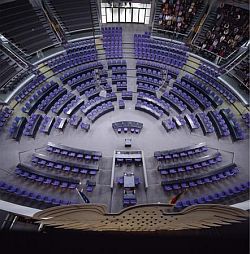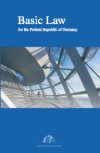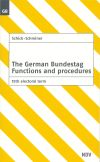Election of Members of the German Bundestag
As a rule, the people decide the composition of the Bundestag every four years. The Basic Law stipulates that its Members be elected in "general, direct, free, equal and secret elections".
"General" means that all German citizens are able to vote once they have reached the age of 18. The elections are "direct" because citizens vote for their representatives directly without the mediation of delegates to an electoral college. "Free" means that no pressure of any kind may be exerted on voters.
"Equal" means that each vote cast carries the same weight with respect to the composition of the Bundestag. "Secret" means that each individual must be able to exercise his or her right to vote in such a way that others cannot ascertain which party he or she has chosen to support.
Constituencies and Land lists
Half of the Members of the German Bundestag are elected directly from Germany’s 299 constituencies, the other half on the parties’ Land lists.
Accordingly, each voter has two votes in the elections to the German Bundestag. The first vote, allowing voters to elect their local representatives to the Bundestag, decides which candidates are sent to Parliament from the constituencies.
The second vote is cast for a party list. And it is this second vote that determines the relative strengths of the parties represented in the Bundestag.
At least 598 Members of the German Bundestag are elected in this way. In addition to this, there are certain circumstances - discussed below - in which some candidates win what are known as “overhang mandates” when the seats are being distributed.
Distribution of seats in the Bundestag
The 598 seats are distributed among the parties that have gained more than five percent of the second votes or at least three direct mandates. Each of these parties is allocated seats in the Bundestag in proportion to the number of votes it has received. In the past, the distribution of seats was calculated using the Hare/Niemeyer method, which reflects the strength of the smaller parties more accurately than some other techniques.
From the 2009 elections onwards, however, the Sainte-Laguё/Schepers method will be used. The decision to apply this method was taken by the Bundestag on 17 March 2008, when it adopted an amendment to the Federal Electoral Act.
The Sainte-Laguё/Schepers method
In the Sainte-Laguё/Schepers method, the numbers of second votes received by the individual parties are divided by a specified figure, or "divisor". In the 2009 elections, therefore, an "approximate allocation" of seats will first be calculated; first, the total number of votes cast will be divided by the total number of seats to be distributed, thus giving a provisional figure to be used as a "divisor" in allocating seats.
Under this system, the quotients calculated using this divisor are rounded up or down to a certain number of seats: remainders below or above 0.5 are rounded up or down, whilst lots are drawn for remainders of exactly 0.5. If necessary, the divisor figure is revised, in order to ensure that the total number of seats allocated to the parties is the same as the number of mandates available.
Once the total number of seats to be allocated to a party has been calculated, these seats are then divided up amongst the Land lists. Here too, seats are distributed in proportion to the number of second votes received.
In a further set of calculations, the number of Members directly elected for each party is subtracted from the total number of seats allocated to that party in each Land, in order to find how many list candidates should receive parliamentary mandates.
Overhang mandates and relative strengths of the parties
If a party has gained more direct mandates in a Land than it is entitled to according to the results of the second vote, it does not forfeit these mandates because all directly elected candidates are guaranteed a seat in the Bundestag. These “overhang mandates” increase the number of parliamentarians above 598. In the 16th German Bundestag, 15 Members hold overhang mandates, nine for the SPD and six for the CDU/CSU. This raises the total number of members to 612.
The results of the Bundestag elections determine the relative strengths of the parties in the Bundestag and therefore the options available when a government is formed. A government can only be formed by parties that, singly or together with others, have the majority of Members behind them. This is why elections are often followed by coalition negotiations between the parties. In the 16th electoral term, the CDU/CSU and the SPD govern in what is known as a grand coalition, a coalition of Germany’s two biggest parties. With 448 seats, they gained an absolute majority together in the Bundestag, which meant they were able to form the government.



